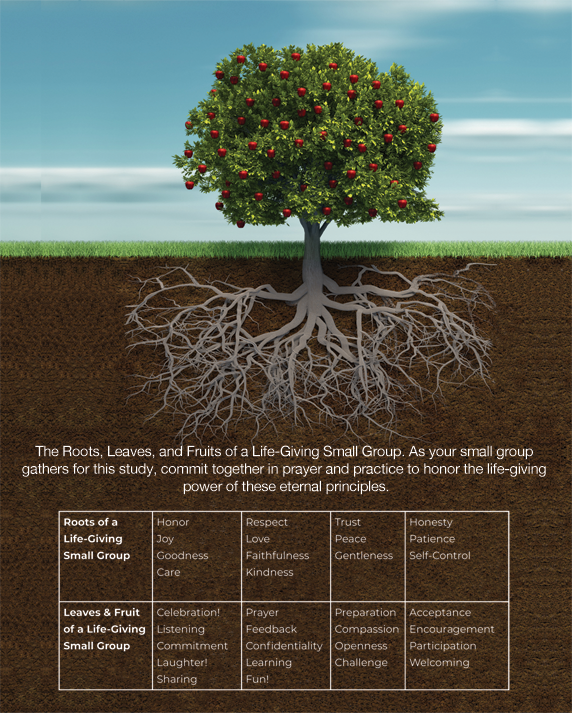LEADERS’ NOTES
Here is a breakdown of the lessons in both volumes:
- There are ten lessons in Volume1: The Beatitudes.
-
- Twelve lessons are in total if you include the Introduction and the Wrap-Up.
- The first “official” lesson is “Jesus at Work”.
- The “Introduction” could be an assigned preparatory reading.
- If desired, the group could have an exchange on the Introduction and the Wrap-Up; there is plenty of material in both, answering questions like: What struck you in a good or bad way? What do you agree or disagree with? What matches your experience or not?
- There are six lessons in Volume 2: The Teachings.
- Nine lessons are the total if you include the “Introduction,” “Interlude” and the “Wrap-up.”
- The first “official” lesson is “You Have Heard…Do Not Commit Murder”.
- The “Introduction” and the “Interlude” could be an assigned preparatory reading and a reading for a week when the group is not meeting.
- If desired, the group could have an exchange on three extra chapters; there is plenty of material with suggested questions like: What struck you in a good or bad way? What do you agree or disagree with? What matches your experience or not?
Avoiding a lecture series is one of the goals of these materials. Participants are encouraged to read the lesson before your group’s next meeting. Video introductions are available on this website. Participants could watch these ahead of your meeting or you could show them at the beginning. These materials are meant for participants to teach each other and share their worries, fears, doubts with each other. Likewise, the small group also celebrates the victories and when new behaviors created new results. Also, this course is designed to spark an interest to dig deeper into scriptures.
You may help by asking follow-up questions when someone talks:
- Ask open-ended questions. Avoid “Why?”; this may make your group members defensive. Use questions like “When…?” “How…?” “What did…?” Avoid prescriptive questions until later in the discussion when we have fully listened and understood their situation (e.g. “Have you tried such-and-such?”)
- Listen for the tone of voice. There may be flags of worry, joy, frustration, contentedness, etc. Sarcasm must be monitored so that people don’t feel demeaned or debased. Encourage the group to practice the deepest levels of listening—attentive and empathetic (see Introduction in Volume 2).
Don’t allow yourself or let others use Christian-ese. (I may have used a few myself in these materials.) If someone uses a religious-sounding word (e.g. sanctification, justification, consecration, holy, worship, etc.), ask them “What does that mean? How does that look/feel in everyday life?” and so on. Often we use terms without really knowing what we mean but we’re repeating what we’ve heard as answers to similar questions before. The group may rely solely on the interpretation of commentators, study bible notes, and what they’ve heard from preachers and teachers. Instead encourage them to test these verses against their own experiences and Spirit-given insights.
Wrestle with the scripture before crying “Uncle!” and turning to the experts. However, the experts have their place in drawing out new aspects of the passages. Each of the verses within the Sermon on the Mount could be a multiple week lesson. If participants want to learn more about these scriptural passages, there are many excellent commentaries out there, in print and online. I encourage everyone to seek several opinions (i.e. commentaries) about what any particular phrase or passage means.
Encourage and be a role model for sharing deeper prayer requests that get at the heart of concerns in our own lives. We can ask God for changes in circumstances, but He’s very interested in heart changes. I hope that people will also share requests for their relationships with co-workers. I like to remind people that prayer is a dialogue. We may want to ask as many questions of God as we make requests
- These materials go through the Beatitudes and then selected passages from the rest of the Sermon. Some passages are skipped, not because they lack relevance to the workplace, because of their length to put them in a job context and have time for discussion. My prayer is that people will have learned how to read the scriptures and ask their own questions of Christ how they might live these principles at work.
- Christ’s perspectives on work life can and should be applied by employees and employers. Employers have a higher burden because they “teach” and model the application of their faith in the workplace. (Matt. 5.19; Jas. 3.1). Please ask each person, no matter what part of the organizational chart they inhabit, how they can apply Christ’s teachings at work.
- There are common business practices, management guides and learned behavior that are contradictory to scripture. It’s not the place for this material to point all these out. Some thoughts on these practices can be found on this website. I have written also about some of these in a Biblical Business Radical series at weareoutofourmind.blogspot.com, such as the challenge of allowing gleaning to happen in our modern businesses and the double-sin of performance appraisals.
Most often we learn by doing and having to teach others. We won’t know if we really understand the lessons until we try to apply them. That’s true whether we’ve learned how to remove stains from a toilet bowl, changing a head gasket, designing an aircraft engine part, programming an ERP subroutine, interviewing a potential employee, or designing a five-year strategic plan. Therefore, each week the last question is: What will you do differently this week?
Encourage your members to start each workday with a simple prayer, such as “Lord, show me how to be ______ today. Amen.”
One literary note: In all but one lesson, I have capitalized the pronouns for God, Jesus and the Spirit. In the first lesson when talking about Jesus’ working life, prior to becoming a rabbi, I use lower case letters to indicate His humanity.

